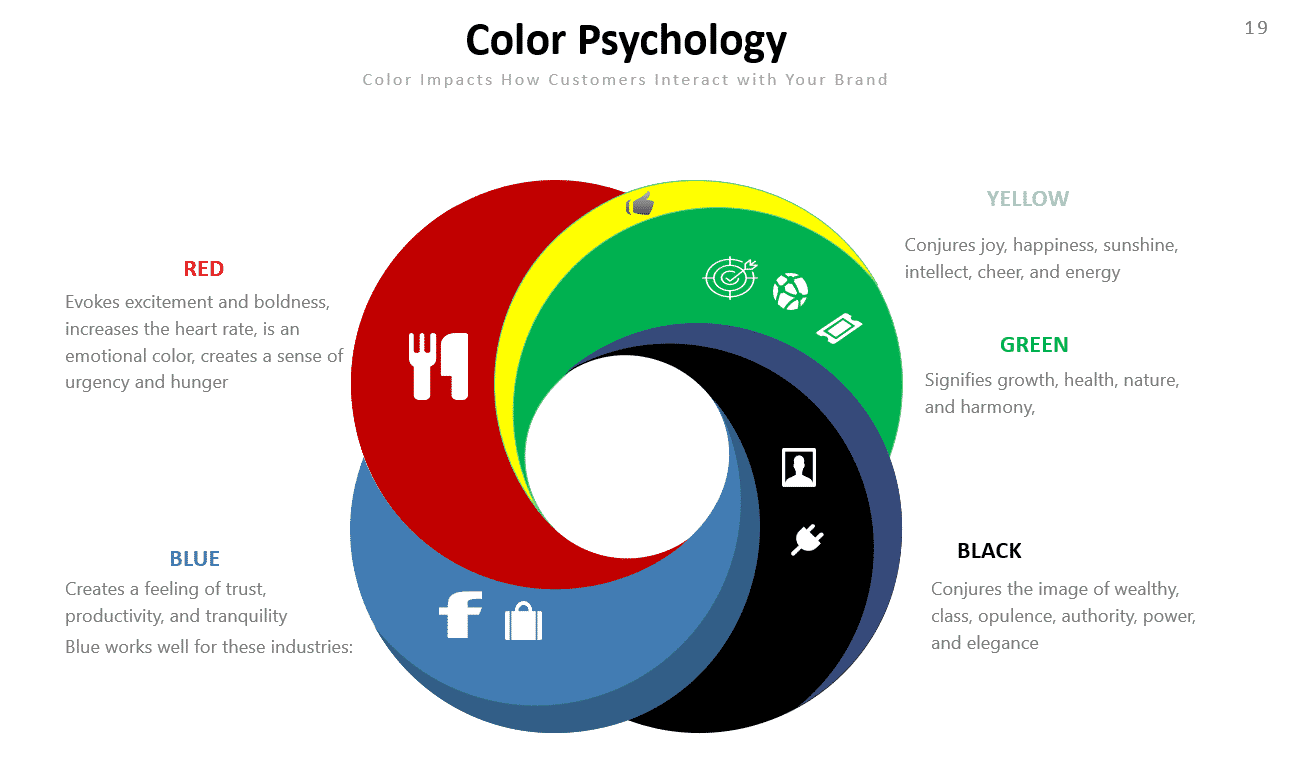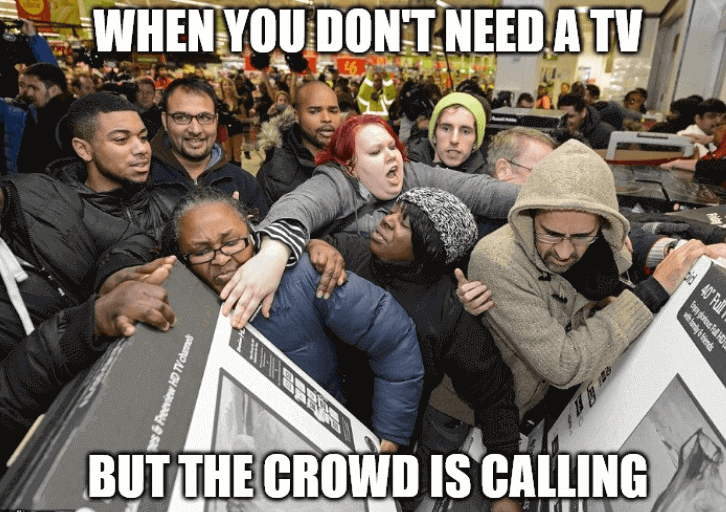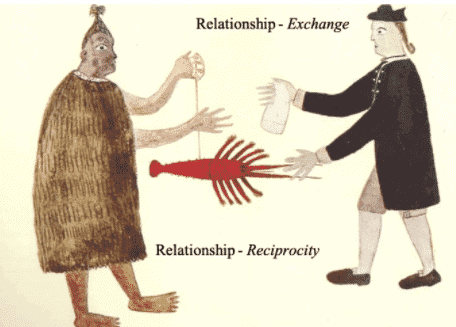Understanding consumer psychology and effectively playing on it is the foundation of marketing.
Though some might disagree with this analysis claiming that other forces are at work too in successful marketing as well as contributing factors.
However, it is our opinion that consumer psychology is at the top of the list.
If a brand or a firm can properly execute psychological tactics in marketing then their campaigns have higher chances of becoming a success which will, in turn, lead to better brand awareness, higher conversions and sales, customer loyalty and a lot more.
However, the question still remains; in actuality, what are psychological marketing tactics?
A good marketer always puts effort whether through market research or customer surveys, to ensure that they understand what type of products appeal to the consumers, what the reactions are of the audiences to their content and campaigns and how everything is received.
All this helps marketers to come up with engaging content that is well-received by the target audience. Thus, the need for understanding consumer psychology.
This understanding is what is taken into account to generate different strategies which are called psychological marketing tactics.
Different kinds psychological tactics in marketing
#1 - Color psychology:
A huge part of content reception by the audience is dependent on the colors it is exhibiting.
This psychological marketing tactic is mostly employed in print marketing and advertising; and also comes in handy when deciding the signature colors of a brand or product.
The reason for this is that people have different feelings and emotions towards different colors.
An example of this is the color blue which is generally associated with reliability, dependability, and strength and is thus the brand color of many banks and insurance firms.
The color red is mostly associated with fire, energy, aggression, excitement, and passion.
Green mostly nods back to the environment, clean energy, conservation, agriculture, growth, and money.
Therefore, marketers can use these tactics to subtly relay a particular message through their campaigns or to rouse certain emotions in their target audience.

#2 - Scarcity:

Using terms and phrases like ‘limited edition’ or ‘one time offer’ implies that the brand or company is offering something special, which is available in a small quantity only.
This leaves the consumers wanting to own that product as they then will have something unique and rare in their possession.
The feeling of owning something special that no one else has convinces them to go and make the purchase.
The psychological play behind this marketing tactic is the same that turns out of date or low-value goods into Giffen goods that are started to be considered a luxury after becoming rare, like record players.
#3 - Emotions:

Emotional ideas and marketing tactics that rouse the sentiments of the target audience or person viewing the content will have a greater reception.
Not only that but it will be more widely shared on social media, increasing brand awareness and free promotions.
Furthermore, people are more likely to make a purchase or sign up for something if it is being promoted or shared by someone they know or follow.
Also, an emotional campaign has better retention and is known to make a lasting impact, just look at ‘Love Has No Labels’ by Ad Council or ‘The Power Of Dreams’ by Honda.
A different approach could be loss aversion; no one likes losing or having to give up something.
This fear of loss is what many marketers can use as a weapon by finding out what their target audience fears of losing the most or is scared emotionally and using those as a means to convert leads.
This can be done in two ways – the subtle approach which shows or hints towards the fears, or by charging straight in with guns blazing and telling the marketers what will happen if they won’t do something.
#4 - Visual appeal:

It is a given that attractive things receive a better reception from consumers and the target audience.
Whether it is a good looking model, a lively color combination, a good font or breath-taking photographs.
A simple message attracts more attention and is received better if it has an aesthetic appeal to it.
Related Topic : Canva Alternatives For Great DIY Graphic Design
#5 - Impact:

A consumer is more likely to perform a particular action if they know what their efforts are going towards.
This might not be effective in all cases but if you are targeting women, or parents, or people who are more empathetic then they will want to make a difference.
However, this won’t just work if a marketer says that ‘all your contributions will go to charity’.
A wiser approach would be to make the consumer aware of how exactly their action will be making a difference and to what extent.
For example, if a company is planning to donate a percentage of their earnings from sales to housing people affected by floods,
then what !
the tagline should be something that showcases the number of victims you are planning to help, the fact that their contributions will give them a ‘home’ don’t use house because that won’t have the same emotional effect.
Secondly, use pictures or stories of the victims in your marketing to show who it is that the consumers are helping.
A good example of such a marketing campaign would be Amnesty Internationals’ Anti Abuse campaign that can be seen across many bus stops in Germany.
#6 - The Halo Effect
In marketing, the halo effect is the influence (positive or negative) that one element has on another.
This Halo effect was identified by psychologists Edward Thorndike and Solomon E. Asch in their work on the Halo effect.
Used well, this effect is a very powerful marketing tool.
Let's take an example to illustrate, and let's take a look at commercial emailing:
The email is the place where you receive messages from your boss, coworkers, family, vacation photos, your grandparents writing to you, etc.
This makes the mailbox an environment populated by people you know and value.
So when an editorial/commercial email arrives in your inbox it will (if it's done right) benefit from the halo of your loved ones and how you feel for them.
We are therefore talking about a side effect here because the good that you think of those close to you who write you emails will resurface on commercial emails.
Obviously, the Halo effect does not guarantee the success of all business endeavors, but it can go a long way.
#7 - Social proof
Social proof is a piece of evidence that your product/service has been purchased by other people and that these people are satisfied.
Very often these are reviews, ratings, comments from social media, testimonials, etc.
Social proof is everywhere: Uber, Airbnb, TripAdvisor, Google My Business… Even the choice of a Burger is now made on the basis of the opinions that clients leave on Google.
Social proof works the same as the full restaurant theory that you are probably all familiar with.
For those in doubt, here is what this theory says:
It's a Saturday night and you are walking through the city center of an unknown city. It’s time to eat and you see two restaurants at the end of the street.
The first is empty, the second is full.
Naturally, your instinct will drive you to the full restaurant first, because you will tell yourself that it is no accident that it is full, but that it is surely because the food that is served there is very tasty.
No more company can avoid social proof, even purely B2B or service companies are rated. Whether by their workers on Glassdoor or on Google.
#8-Curiosity

With the multiple demands that consumers experience, one of the great challenges of marketing is to capture attention.
To achieve this, the curiosity gap strategy is used to get visitors to want to know more and find the missing information.
When a visitor realizes he doesn't know something, he feels compelled to fill that knowledge gap.
This is particularly helpful for social media posts. Using a headline that will make you want to know more helps orient the content in a way that arouses curiosity, so every word will be heard.
This curiosity gap technique is also effective on ezine sites. Writing quality content while offering an only partial reading of it is frustrating for the visitor.
His desire for knowledge is not being fulfilled, he is encouraged to take out a subscription in order to access the rest of the articles online.
#9 - Reciprocity in Marketing
The first technique that I would like to explore is that of reciprocity marketing.
Let's break this concept together, without gibberish or technique, and start right away with an example, to understand what reciprocity is.
Robert Cialdini, another American psychologist, tells us about a second experiment carried out on the waiters of a restaurant. There are three scenarios:
- The waiter brings the note and leaves.
- The waiter brings the bill with candy and leaves.
- The waiter brings the bill with a candy. Take a second from his pocket, and give it to the customer, telling them it's especially for them.
- The study shows that:
In the second case, the customer leaves a higher tip of 3.3% (on average)
In the third case, the customer leaves, beware, a tip 20% higher than in the first case!
How to explain these results?
The phenomenon at work here is that of reciprocity:
When someone is sympathetic to us, we feel the need to return the favor.
The concept of reciprocity in marketing was theorized by Robert Cialdini in his work and his book “Influence: The Psychology of Persuasion”, which is a true book for followers.
If you have a physical store, don't hesitate to offer little "extras" (sweets, additional services, preferential treatment, ...).
The objective here is for your customer to feel that you pay them special attention, that you are particularly sympathetic to them.
If you have an internet business, use this technique and offer “freebies” (ebook, seminar, resources, webinars, training, etc.) to your prospects to increase their need for reciprocity (which will result in the purchase of your product/service).
#10 - Follow Maslow's Method
When we read about Maslow's pyramid, we are pointing to the psychological theory introduced by Abraham Maslow, which delivered a fabulous reputation both in the world of psychology and in the world of marketing in general.
This theory is based on the evidence that human needs got a certain hierarchy, once the basic need is met, the person places higher requirements and improves his wants.
The important point is the need. Maslow describes the pyramid in the following order of preference.
- Psychological needs.
- Security.
- Acknowledgment.
- Self-realization.

Physiological needs are those of each person and all others are born.
For instance, if all of my needs are met, I can concentrate on making a good business and stand out from the crowd.
On the other side, if I am starving and have zero to eat, my power will be centered on the food as soon as possible.
If you cannot reach your basic needs you will not be capable to run forward. If you don't get credit, you will never be strong to attain self-realization.
You cannot jump steps. You must first perform one stage to move on to the following.
This theory demonstrates why capitalists continue to ask for constant credit. They have already reached their more moderate layers and need to build their self-realization.
To Sum Up..
Aside from these psychological marketing tactics, there are much more that can be used by marketers, however, these were the ones that are at the top of our list in Role of psychology in marketing.
It isn’t necessary that marketers should use one or all of these psychological marketing tactics in their content.
They can use as many as it takes, making sure that too much doesn’t result in the creation of something that misses the entire point; so be smart about what you’re planning to utilize.
Like color psychology, emotions and impact can all be utilized to create something amazing; what can be done for example is that a marketer can create emotional content, tell people what impact they can make, and then use the right colors and images to showcase it.
Further Reading :
Infallible Neuromarketing Techniques Applied To CONVERSION And SEO.


